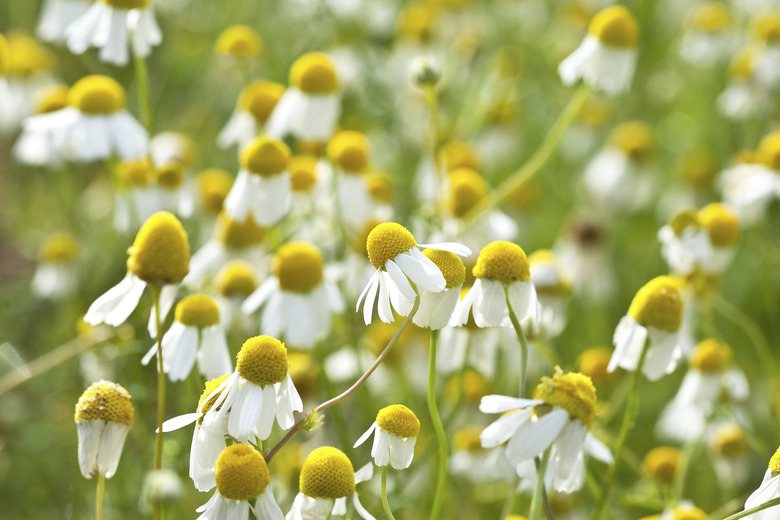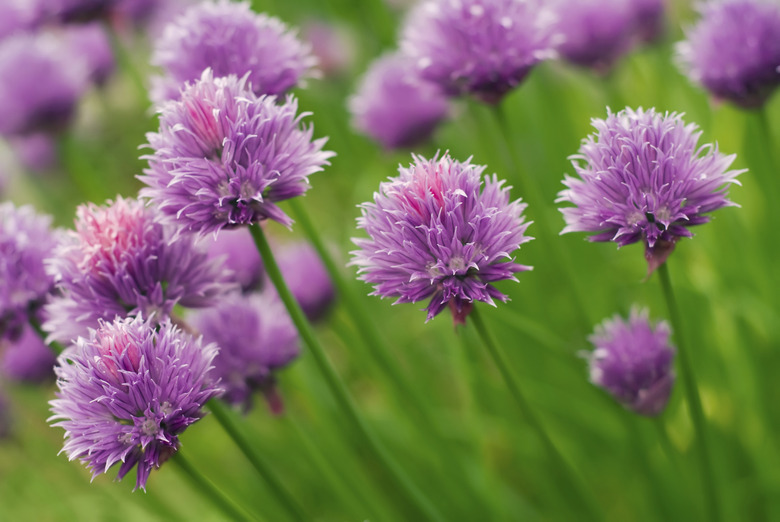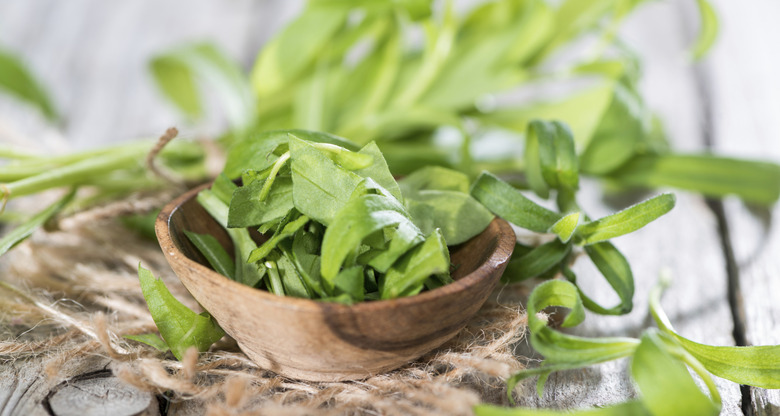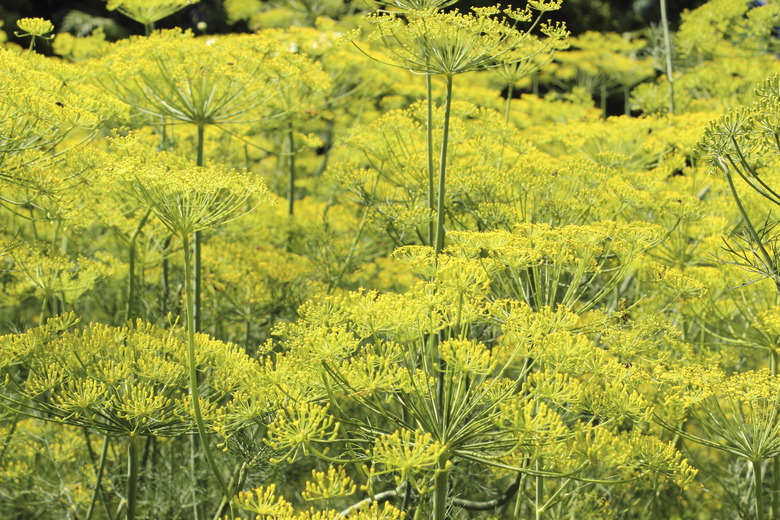Herbs That Are Perennials
For a low-maintenance herb garden, choose perennials, so you won't need to replace them every spring. You can give the herbs a bed of their own or intersperse them among plants with showier blooms. Although large on scent, herbs often have diminutive flowers. Having both medicinal and culinary uses, they can be grown for their practicality as well as their prettiness. Consider the ultimate height of the plants when deciding where in the bed to place them.
Step 1
At the front of your herb bed, plant low-growing herbs which don't surpass 1 foot in height. With its small daisy-like flowers and ferny foliage, Roman chamomile (Chamaemelum nobile or Anthemis nobilis) reportedly enjoys being walked on, so it can be allowed to creep onto your garden path in U.S. Department of Agriculture plant hardiness zones 3 to 10. Some of the tiny-leaved and aromatic thymes (Thymus spp., USDA zones varying from 3 to 11) also hold up well to foot traffic and will swarm around the stepping stones. Choose sweet woodruff (Galium odoratum, USDA zones 5 to 10) to edge the path's shady areas with whorls of hay-scented foliage and tiny white flowers.
Step 2
Short Stuff
Step 1
Just behind the groundcovers, set the herbs whose mature height varies from 1 to 2 feet. Chives (Allium schoenoprasum, USDA zones 4 to 10) provide contrast to more conventionally leafed herbs with onion-like spikes of foliage and spheres of mauve flowers. A whiff of Greek oregano (Origanum vulgare subsp. hirtum, USDA zones 4 to 9) may make you crave pizza every time you brush the plant's oval leaves and miniscule white blooms. Savor also the peppery scent of winter savory (Satureja montana, USDA zones 5 to 10) with its spikes of pointy leaves and white flowers.
Step 2
A Happy Medium
Step 1
Reserve the center of your bed for herbs which reach 2 to 3 feet. For anise-scented tarragon, make sure you acquire the cutting-propagated French type (Artemisia dracunculus, USDA zones 3 to 9), which is reportedly much superior to the seed-propagated Russian variety (Artemisia dracunculoides, USDA zones 3 to 9). Lavenders (Lavandula spp.), with their silvery leaves, soapy scent and pale purple blooms need well-drained soils to survive winters colder than those in USDA zones 6 to 11. Sage (Salvia officinalis, USDA zones 4 to 10) contributes gray-green and velvety leaves, accompanied by mauve flowers and an aroma reminiscent of Thanksgiving stuffing.
Standing Tall
Step 1
Reserve the back of the bed for the tallest herbs, such as the 6-foot fennel (Foeniculum vulgare, USDA zones 5 to 10), which pops open parasols of tiny yellow flowers over feathery foliage that smells like licorice candies. Lovage (Levisticum officinale, USDA zones 3 to 10) can match fennel's height but its also yellow flower umbels have a greenish cast above leaves that look — and taste — like those of celery (Apium graveolens var. dulce, USDA zones 5 to 10). Valerian (Valeriana officinalis, USDA zones 3 to 9) usually doesn't surmount 5 feet, with ferny leaves and white, pink, or lavender flower clusters, and may get dragged lower by cats who can't resist rolling in it.
References
- Taylor's Weekend Gardening Guides to Cold Climate Gardening; Rebecca Atwater Briccetti
- University of Idaho: Perennial Herbs
- North Carolina State University: Growing Requirements and Uses of Biennial and Perennial Herbs
- Sunland Herbs: French Tarragon
- Floridata: Origanum vulgare
- The Plant Book; Susan Page and Margaret Olds
- The Healing Herbs; Michael Castleman



